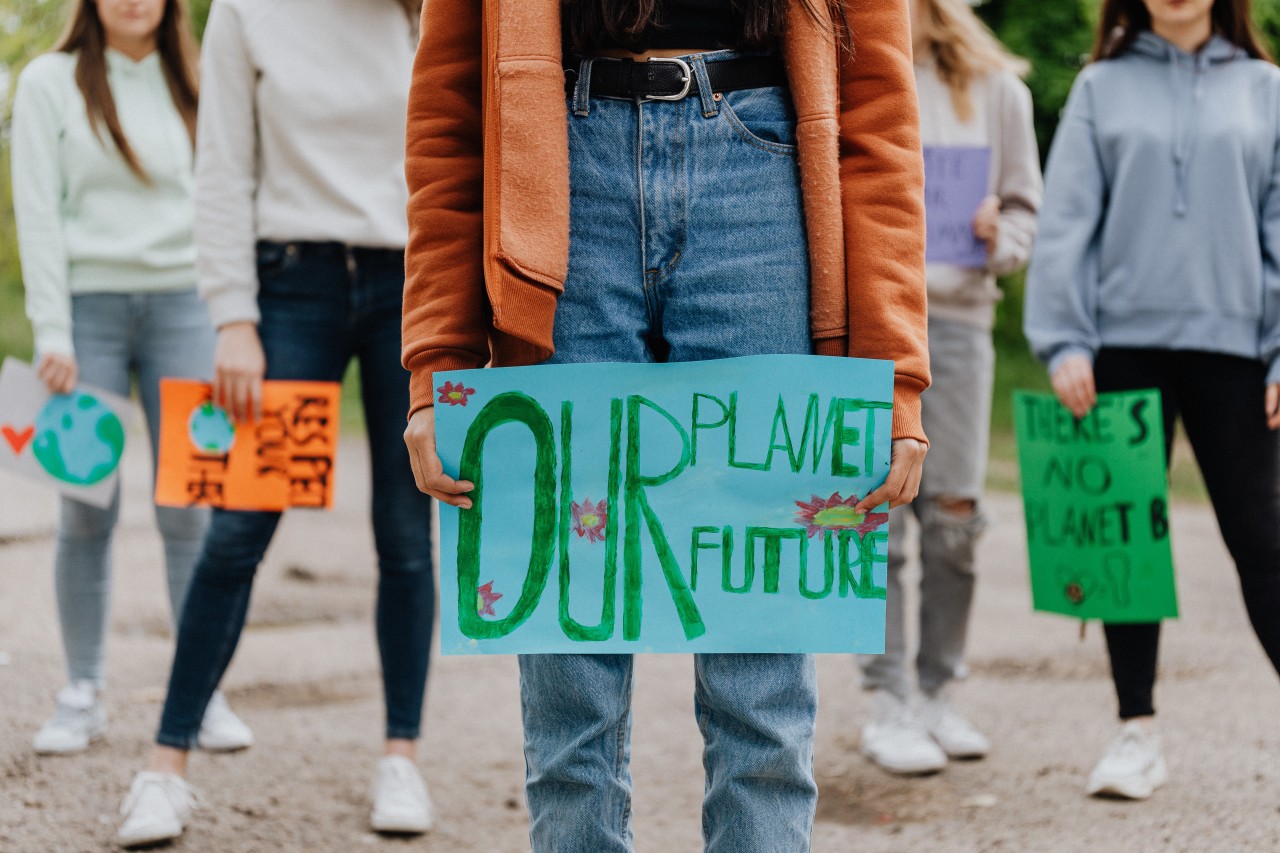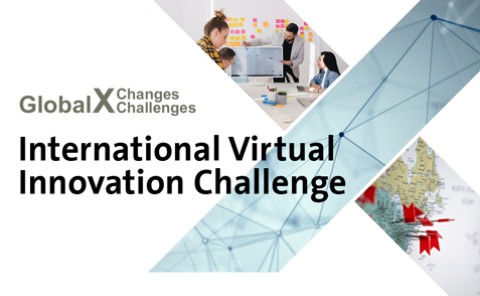Motivating Local Companies towards Climate Protection
GXC challenge with the City of Munich, Department of Labor and Economic Development

Overview
The challenge for this project was proposed by the City of Munich, specifically the Department of Labor and Economy. This department deals with fundamental economic and employment policy issues, handles economic development projects and manages local government investments in the corporate sector. Their challenge in the GXC program was based on the City of Munich’s climate goals: It aims to be climate neutral by 2035. To reach this goal, however, contribution across all societal layers including the corporate sector is needed. The City of Munich has already developed and implemented different programs (e.g. ÖKOPROFIT/ECOPROFIT or Munich Business Climate Pact) to support companies that want to contribute to the city's climate goals.
Problem
To achieve the climate goal, a boost in decarbonization through digital technology is needed. Especially during crises like the Corona pandemic, many companies struggle with budget restrictions and economic problems. This results in a deprioritisation of measures for CO2-reduction. Therefore, the City of Munich is seeking practical and user-friendly digital solutions to motivate companies of all sizes to be ecologically responsible and move toward climate protection. The solution should be cost-efficient and should take a human-centric approach that could result in a measurable decrease in CO2 emissions. In addition, there should be a focus on a collaboration between companies and the city government since the city has a big role of facilitating communication and providing resources for companies.
The challenge for the student teams was therefore: How could municipalities motivate local companies towards climate protection in times of crisis and with the help of digital solutions?

Approach
Video lectures and weekly live sessions for content input as well as individual team coaching sessions with experts accompanied the students during their project work for nine weeks. The four student teams followed an innovation process applied in the action-learning course format “Real Projects” from HM’s entrepreneurship center SCE that starts by understanding the problem through general research. In this case the students started with research about the climate change, environmentally friendly businesses and possible ways to reduce carbon emissions. During a first meeting with the representative of the Department of Labor and Economic Development, the students were then able to discuss the challenge in person and to ask questions. Interviewing stakeholders also helped them to define the problem better and to collect first rough ideas.
In the third week, with the support of Amazon Web Services and HM’s Digital Transformation Lab, a two-part intensive workshop enabled the students to concretize the first approaches of their problem solutions. A brainstorming exercise, called the "Crazy Eight Ideation" method, helped them to come up with different kinds of initial ideas that they then structured. To be able to apply a customer-centric focus, the teams learned about the Amazon way of innovating, a method called "Working Backwards", during their workshop. It considers the needs and wishes of the potential end-users as well as those of the City of Munich. Using these techniques, the teams were then able to decide on one final solution idea each. During the following six weeks, these ideas were elaborated with the help of various artefacts like storyboards, fictional press releases, empathy maps, FAQs (Frequently Asked Questions), business model canvases and, ultimately, digital prototypes. To get an idea of how to prototype using digital technologies, the students were provided with detailed information about three different tools during one of the weekly live sessions: Figma, Bubble and Glide.
In an online exchange with the challenge giver, the ideas and drafts of the prototypes were presented to the City of Munich for the first time. Valuable feedback helped the teams to further develop the prototypes and to finalize them for their final presentation.
Prototypes
The first team used Glide to develop a prototype solution called M-Visual as an extension of the City of Munich’s ECOPROFIT program. M-Visual is a user-friendly carbon footprint calculator that allows companies to easily visualize their CO2 consumption and to compare it with other companies of their size and sector. It is available in a mobile and desktop version and also gives recommendations on how to reduce CO2 emissions. By entering data about energy usage, water consumption, employee transportation and a variety of other inputs, M-Visual produces a general overview of the company's CO2 usage. This also includes a clean visualization of the data, personalized examples for how the company could reduce its consumption, consumption comparisons to other ECOPROFIT companies as well as a chat feature that allows companies to share ideas for reducing CO2 usage. In times of crisis, large institutional and infrastructural changes are hard to make within a company. M-Visual, however, is easy to use and does not require any commitment. This allows companies to implement whichever recommendations are most appropriate for them at the time that suits them best.
Bringing nature into offices was the idea of the second team. Using the tool Figma, the team developed a website that provides businesses with information about green walls in office spaces. A green wall is a structure filled with plants that is placed on the outside or inside of a building. When placed outside of a building, green walls provide insulation, which results into reduced energy bills for companies. This means that green walls are investments that save money over time. When placed inside, they also improve air quality and aide in stress relief for employees. Therefore, green walls create an aesthetically pleasing workplace while also reducing carbon dioxide levels. The website provides information about the general concept of green walls, a questionnaire to help figure out the right type, tutorials on how to build a green wall and a picture gallery for inspiration. By supporting the idea of green walls in office spaces, the City of Munich could be helping businesses to invest in the environment.
Ecolution, an online platform developed by the third team using the tool bubble, is an online network for businesses that facilitates collaboration and strengthens information sharing to retain participating businesses in the program. The app also helps to simplify the process of reducing CO2 by providing a user-friendly carbon tracker that generates graphs of the business’ progress in CO2 reductions. Based on their progress to carbon neutrality, businesses are assigned an “Ecolabel”, which will then be publicly available through the Department of Labor and Economic Development’s website and social media. This should promote more consumer support for environmentally responsible businesses. Businesses can also create a profile on Ecolution and see implemented measures and CO2 reductions of other businesses. They can send messages to connect with other businesses to share more detailed information about their CO2 reduction strategies and to connect with representatives from ECOPROFIT for additional support.
The fourth team used Figma to develop a ranking system that could be implemented on the City of Munich’s website. This system ranks small businesses according to their reduction of CO2 emissions, giving consumers a way to shop at businesses that are working to be more eco-friendly. It also allows businesses to be sorted based on how much they decrease their CO2 emissions each year. After submitting their self-reported emissions data, the data will be compared to the values from previous years. If they decreased, then their business will automatically be added to the list published on the City of Munich’s website. Consumers can then see this list and find businesses they prefer to shop at based on their efforts to help the environment.
Next Steps
The final presentation to the City of Munich, Department of Labor and Economic Development, took place on December 8th, 2020. Following the presentation, the student teams shared their presentations as well as a link to their prototypes with the challenge giver, who will use the ideas as input for future strategic planning activities. In particular, the M-Visual prototype could be a good addition to the City’s current ECOPROFIT tool and possible further development and implementation within the work frame will be discussed.
About GXC
This project was one of three challenges of the GXC International Virtual Innovation Challenge. It is a special edition of the Real Projects course format, which was offered for the first time in the winter semester 2020/21 as part of the "GlobalXChanges/Challenges (GXC)" project. In this virtual online course, public governmental and non-governmental organizations proposed innovation challenges that could be solved through digital technologies. Next, students from Munich University of Applied Sciences (MUAS) and its four strategic partner institutions dived into an international virtual action-learning course. The students were divided into international interdisciplinary teams and followed an innovation process to tackle the proposed challenges and prototype solutions. The course included video lectures and dynamic weekly live sessions with a professor for content input and additional tutoring and team coaching sessions with industry experts to get advice on prototyping. Mentor students supported the teams with the challenges of remote international teamwork.
The GlobalXChanges/Challenges project is funded by the German Academic Exchange Service (DAAD) from funds of the Federal Ministry of Education and Research (BMBF). For more information on the GXC measures and the International Virtual Innovation Challenge visit hm.edu/gxc.
Lecturer: Prof. Gudrun Socher
Februar 2021
Documents
The final documentation and prototypes developed by the four teams are available open access under the following links: